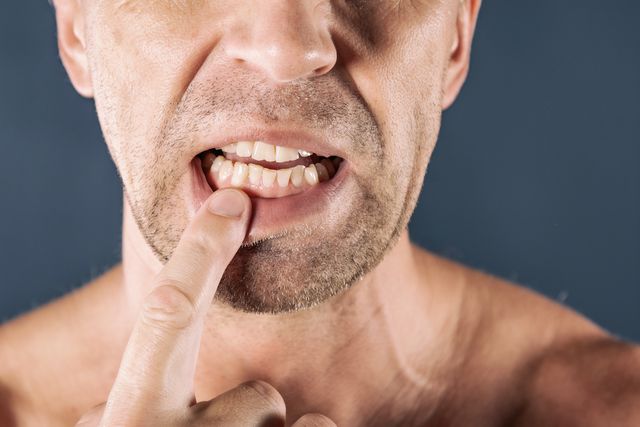Gum disease refers to an infection within the gum tissue. Though common, affecting half of American adults at some point in their lives, this infection can lead to serious problems for the gums as well as the rest of the smile.
Your gums serve to solidify the firm position of your teeth in your smile. So if the gum tissue sustains damage, then the wellness of your teeth could suffer too. Plus, excess bacteria from this gum infection will spread to the teeth and jaw without intervention from a dentist.
Damage caused by gum disease might prove irreversible in some cases, so do not ignore this periodontal issue. Discuss preventive care for your gums with your dentist, and read on to learn more about periodontal disease and its consequences.

Stages of Gum Disease
Gum disease is a progressive infection, meaning that it will advance and cause more havoc on your oral health without treatment. It will not go away on its own, and it is easier to treat when diagnosed early. Recognizing the signs of gum disease in each of its stages can help you know when to seek treatment from your dentist.
Gingivitis is the early phase of gum disease when bacteria first infect the gum tissue. As bacteria build up in the gum pockets, you can see inflammation and irritation in the gums. The gum tissue may bleed, swell, and feel sore at this stage.
If left untreated, gum disease will progress and cause more damage to the gums. Eventually, the gums may start to recede, exposing more of the surface of the teeth. Bacteria will eat away at the teeth and the jawbone along with the gums.
This more severe phase of gum disease is known as periodontitis. In the wake of this gum deterioration, your tooth might fall out, and the tissue loss in the gums might prove irreversible.
Treatment Options for Gum Disease
To stop this progression of gum disease, you will need to seek periodontal therapy from your dentist. If your dentist determines you have gum disease, they can start treating the problem right away with a targeted cleaning process.
First, the dentist will use a scaler to clear away excess bacteria accruing deep in the gum pockets. A toothbrush alone cannot reach to clean this part of the mouth. Then the dentist uses a process called root planing to smooth damaged gum tissue against the tooth to encourage healing.
If the infection persists, the dentist might suggest more extensive restorative treatment like laser therapies or gum surgery to get rid of gum disease. The dentist may also recommend using an antibacterial mouthwash to balance oral bacteria and prevent further damage from the disease.
Protect Your Teeth and Gums from Infections
While a dentist can treat gum disease, you can prevent serious dental damage caused by this infection when you take measures to reduce the risk of contracting it in the first place. Prevent bacterial spread in the mouth by practicing good oral hygiene. This means brushing your teeth twice a day and flossing daily.
Proper oral hygiene also includes professional teeth cleanings from your dentist. Make sure you attend routine dental check-ups to receive this crucial care, along with an oral exam.

